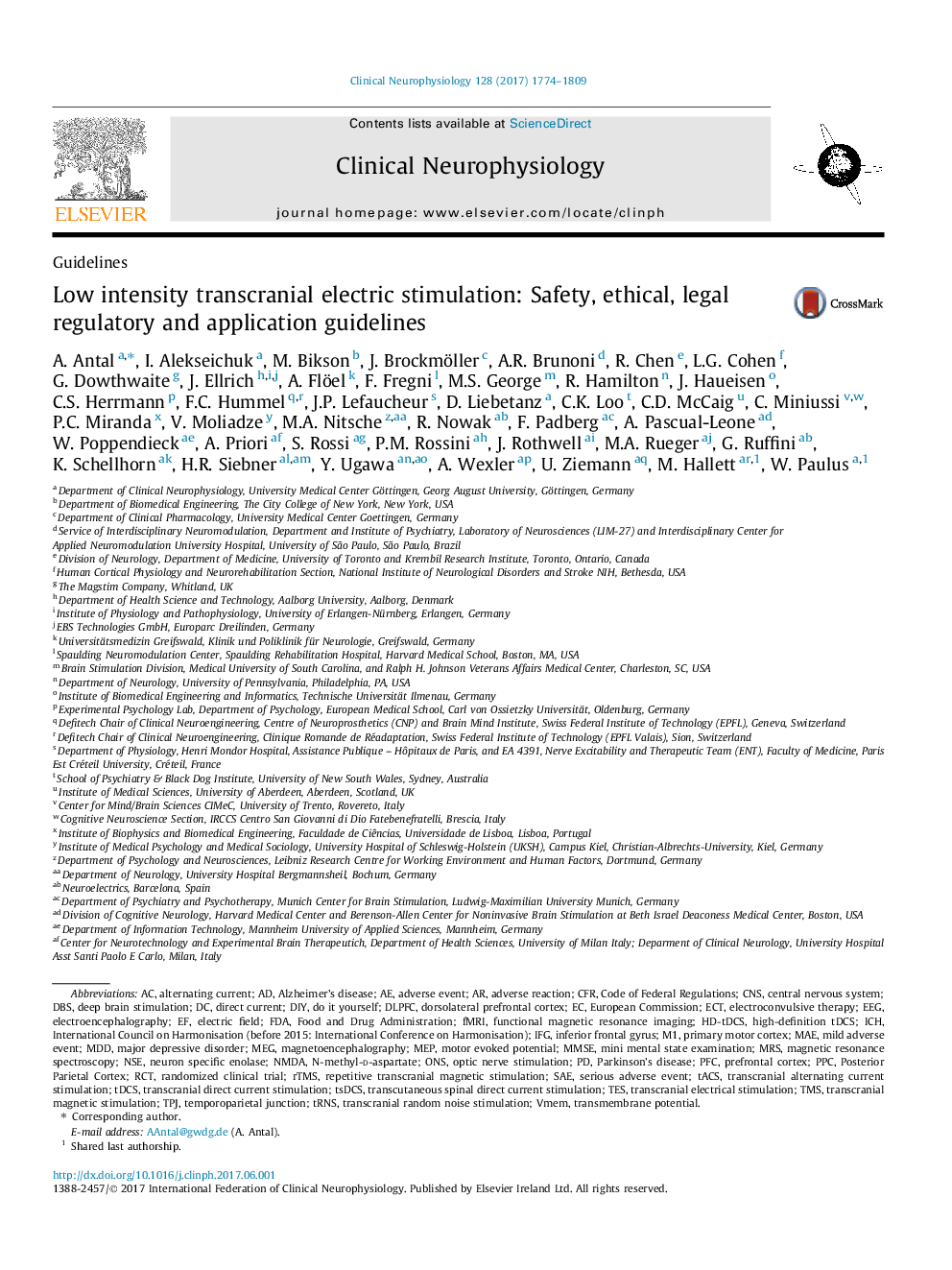| کد مقاله | کد نشریه | سال انتشار | مقاله انگلیسی | نسخه تمام متن |
|---|---|---|---|---|
| 5627228 | 1406345 | 2017 | 36 صفحه PDF | دانلود رایگان |
- The application of low intensity TES in humans appears to be safe.
- The profile of AEs in terms of frequency, magnitude and type is comparable in different populations.
- Structured checklists and interviews as recommended procedures are provided in this paper.
Low intensity transcranial electrical stimulation (TES) in humans, encompassing transcranial direct current (tDCS), transcutaneous spinal Direct Current Stimulation (tsDCS), transcranial alternating current (tACS), and transcranial random noise (tRNS) stimulation or their combinations, appears to be safe. No serious adverse events (SAEs) have been reported so far in over 18,000 sessions administered to healthy subjects, neurological and psychiatric patients, as summarized here. Moderate adverse events (AEs), as defined by the necessity to intervene, are rare, and include skin burns with tDCS due to suboptimal electrode-skin contact. Very rarely mania or hypomania was induced in patients with depression (11 documented cases), yet a causal relationship is difficult to prove because of the low incidence rate and limited numbers of subjects in controlled trials. Mild AEs (MAEs) include headache and fatigue following stimulation as well as prickling and burning sensations occurring during tDCS at peak-to-baseline intensities of 1-2Â mA and during tACS at higher peak-to-peak intensities above 2Â mA.The prevalence of published AEs is different in studies specifically assessing AEs vs. those not assessing them, being higher in the former. AEs are frequently reported by individuals receiving placebo stimulation. The profile of AEs in terms of frequency, magnitude and type is comparable in healthy and clinical populations, and this is also the case for more vulnerable populations, such as children, elderly persons, or pregnant women. Combined interventions (e.g., co-application of drugs, electrophysiological measurements, neuroimaging) were not associated with further safety issues.Safety is established for low-intensity 'conventional' TES defined as <4Â mA, up to 60Â min duration per day. Animal studies and modeling evidence indicate that brain injury could occur at predicted current densities in the brain of 6.3-13Â A/m2 that are over an order of magnitude above those produced by tDCS in humans. Using AC stimulation fewer AEs were reported compared to DC. In specific paradigms with amplitudes of up to 10Â mA, frequencies in the kHz range appear to be safe.In this paper we provide structured interviews and recommend their use in future controlled studies, in particular when trying to extend the parameters applied. We also discuss recent regulatory issues, reporting practices and ethical issues. These recommendations achieved consensus in a meeting, which took place in Göttingen, Germany, on September 6-7, 2016 and were refined thereafter by email correspondence.
Journal: Clinical Neurophysiology - Volume 128, Issue 9, September 2017, Pages 1774-1809
